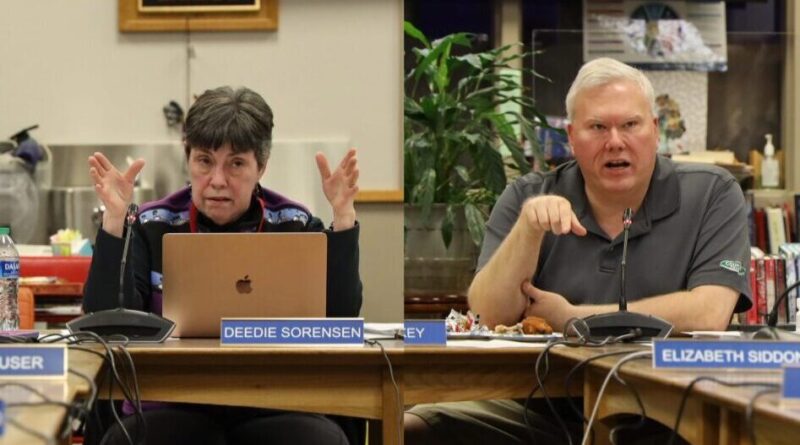Juneau School Board takes next steps in budgeting process as state funding remains unclear
The Juneau School District Board of Education will begin the formal decision making process for the district budget Thursday. The district will present a draft budget to the board, but state funding and union contracts are still up in the air.
Superintendent Frank Hauser presented budget projections to the board last Saturday. He said the district anticipates a small deficit if there’s no increase to the base student allocation – the state’s per-student funding contribution. But he said the district will have some flexibility because it has just under $2 million in its fund balance.
Hauser recommended creating a budget based on the assumption of a $400 increase in the BSA because of that flexibility. The Alaska Legislature is currently hashing out education funding with Gov. Mike Dunleavy.
Board members like Emil Mackey had some concerns after the district faced a multimillion-dollar deficit last year. The district consolidated its middle and high schools and closed Floyd Dryden Middle school to address the budget shortfalls.
“We got into the crisis from board members wanting to artificially believe that there is a BSA that would not be vetoed, that did get vetoed, above my objections,” Mackey said. “I don’t ever want to see that happen again.”
Hauser said if the state doesn’t increase the BSA, the district would face a large deficit in the coming years.
“The district is in much more firm financial footing. It is by no means in a great position, like the majority of districts across the state of Alaska,” he said.
Projected expenditures still aren’t set in stone either, including additional spending from new union contracts. The district accounted for a small raise for teachers that it proposed with the Juneau Education Association. But it hasn’t completed contract negotiations with them or other unions. JEA proposed 10% raises to teacher salaries and additional classroom preparation time for elementary and high school teachers.
Last year, about 5% of teaching and staff roles were vacant, which meant the district saved some money. Hauser said the district hopes to get that vacancy rate down and recommends planning for a drop to 3%.
He said while unfilled staff positions means the district spends less, that comes at a cost to not having enough people working. The district won’t know how much it’s actually spending on staffing until it begins hiring for the next school year as well.
The board is scheduled to meet Thursday at 5:30 p.m. in the Thunder Mountain Middle School Library.

